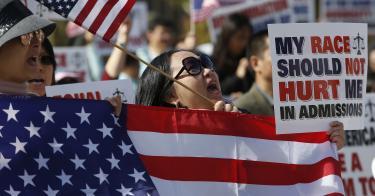The ABA recently put forth a newly revised Standard 206 on Diversity, Equity, and Inclusion. While the ABA has maintained a Diversity and Inclusion standard for many years, an ABA Fall 2020 Roundtable on Diversity, Inclusion, and Equity released a revised standard in May 2021. It was accompanied by the suggestion that it be made a “core” standard, which would make a law school’s failure to comply grounds for public notice and, potentially, loss of its accreditation.
The ABA’s highly sought-after accreditation has been granted to 199 of the nation’s 237 law schools. In most states, law school graduates cannot sit for the bar exam unless they have graduated from an ABA-accredited school. And since the federal Department of Education recognizes the ABA as the only law school accrediting agency, certain financial aid and other financial benefits can be withheld from both a school and its students unless the ABA has accredited it. Its status as sole law school accreditor gives the ABA the power to force law schools to adopt even controversial standards.
The updated standard read:
(a) A law school shall provide: (1) Full opportunities for the study of law and entry into the profession by members of underrepresented groups, particularly those related to race, color, ethnicity, religion, national origin, gender, gender identity or expression, sexual orientation, age, disability, and military status; and (2) An environment that is inclusive and equitable with respect to race, color, ethnicity, religion, national origin, gender, gender identity or expression, sexual orientation, age, disability, and military status. (b) A law school shall take effective actions that, in their totality, demonstrate progress in (1) Diversifying the students, faculty, and staff; and (2) Creating an inclusive and equitable environment for students, faculty, and staff.
>>> Law Students Are Not OK: The Legal Profession’s Leftward Lean
Most controversially, the standard went on:
The requirement of a constitutional provision or statute that purports to prohibit consideration of race, color, ethnicity, religion, national origin, gender, gender identity or expression, sexual orientation, age, disability, or military status in admissions or employment decisions is not a justification for a school’s noncompliance with Standard 206.
There was significant blowback to this proposal from multiple law professors, scholars, and educational organizations, so the ABA has since revised Standard 206 twice more. Most recently, the February 2022 rendition eliminates the provision about inconsistent law. But it doesn’t do much better than earlier iterations of the standard and calls for consideration of race above all:
(a) A law school shall ensure the effective educational use of diversity by providing:
(1) Full access to the study of law and admission to the profession to all persons, particularly members of underrepresented groups related to race and ethnicity;
(2) A faculty and staff that includes members of underrepresented groups, particularly those related to race and ethnicity; and
(3) An inclusive and equitable environment for students, faculty, and staff with respect to race, color, ethnicity, religion, national origin, gender, gender identity or expression, sexual orientation, age, disability, and military status.
The Association’s updated race-conscious diversity standard is typical of the new equity-focused concept of antiracism in which skin color matters first and foremost. Its main result would be to make law schools more race-conscious, more politically correct, and less intellectually diverse.
A revised standard that requires law schools to diversify their faculty, staff, and student bodies removes from those law schools any academic judgments their administrators might exercise related to the “narrowly tailored” diversity efforts approved by the Supreme Court in Grutter v. Bollinger. In Grutter, the Court deferred to the academic freedom of universities seeking diversity for educational reasons. By requiring law schools to pursue diversity, however, the ABA substitutes its own judgment for theirs, and forces a reliance on the ABA rules simply to ensure accreditation.
Another problem is definitional. What constitutes “effective” use of diversity? How many faculty members from “underrepresented” groups are required? The ABA seems unconcerned with such details.
The Supreme Court has granted certiorari in a pair of cases brought by Students for Fair Admissions against Harvard and UNC, putting to the Justices the question of whether Grutter v. Bollinger should be overruled, thereby eliminating the use of race in higher education admissions altogether. The decision will likely come down while the ABA continues to modify its Diversity, Equity, and Inclusion standard focusing on race, while very nearly calling for American law schools to violate Title VI and the Equal Protection Clause. Should the Supreme Court grant petitioners’ request and overrule Grutter, the ABA’s standard may be subject to future legal challenges.
Standard 206 will go before the ABA’s governing body, its House of Delegates, for a final vote on adoption this August.
It carries the ABA’s implicit threat: risk accreditation and federal funding or go woke.
This piece originally appeared in The Federalist Society



